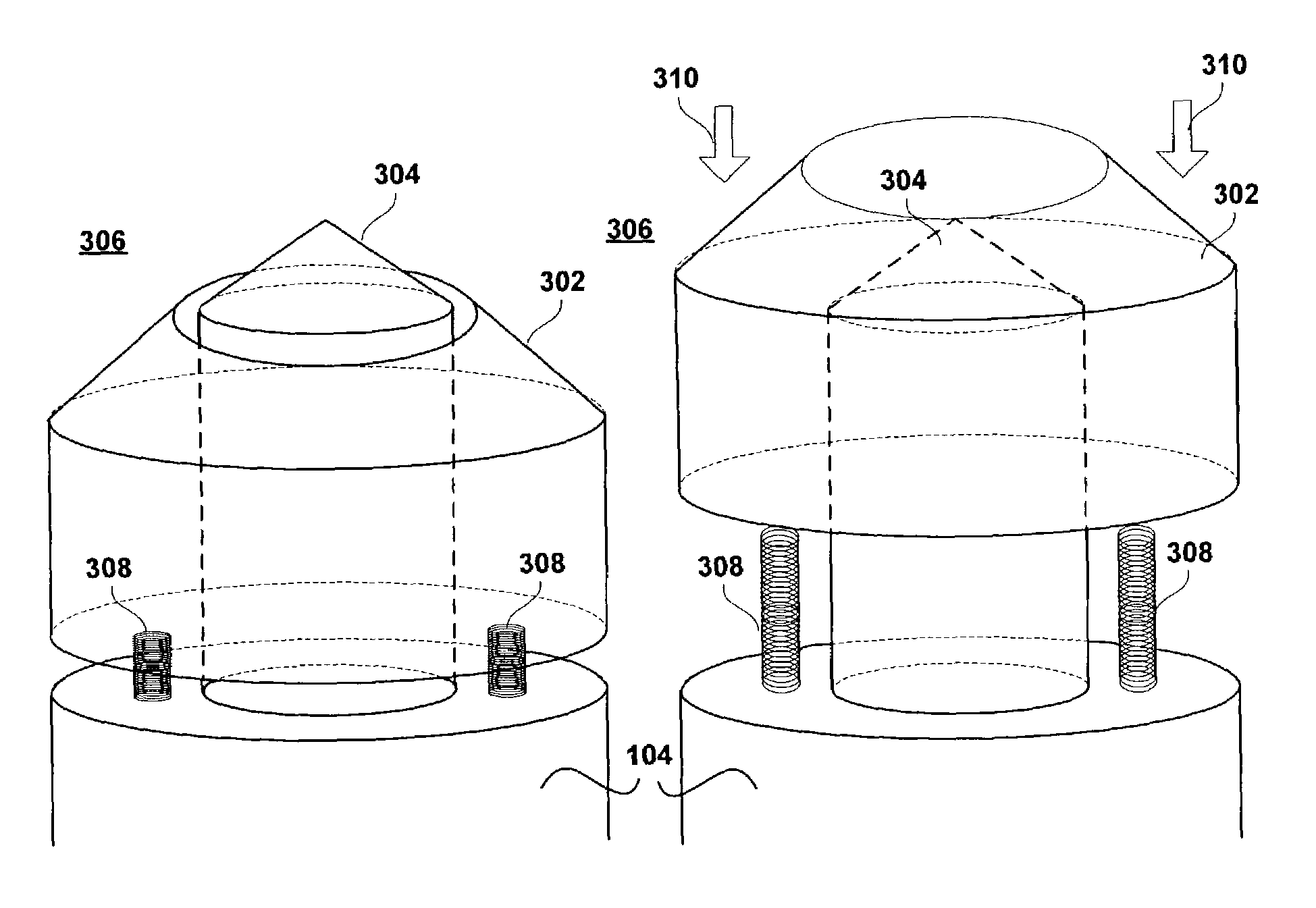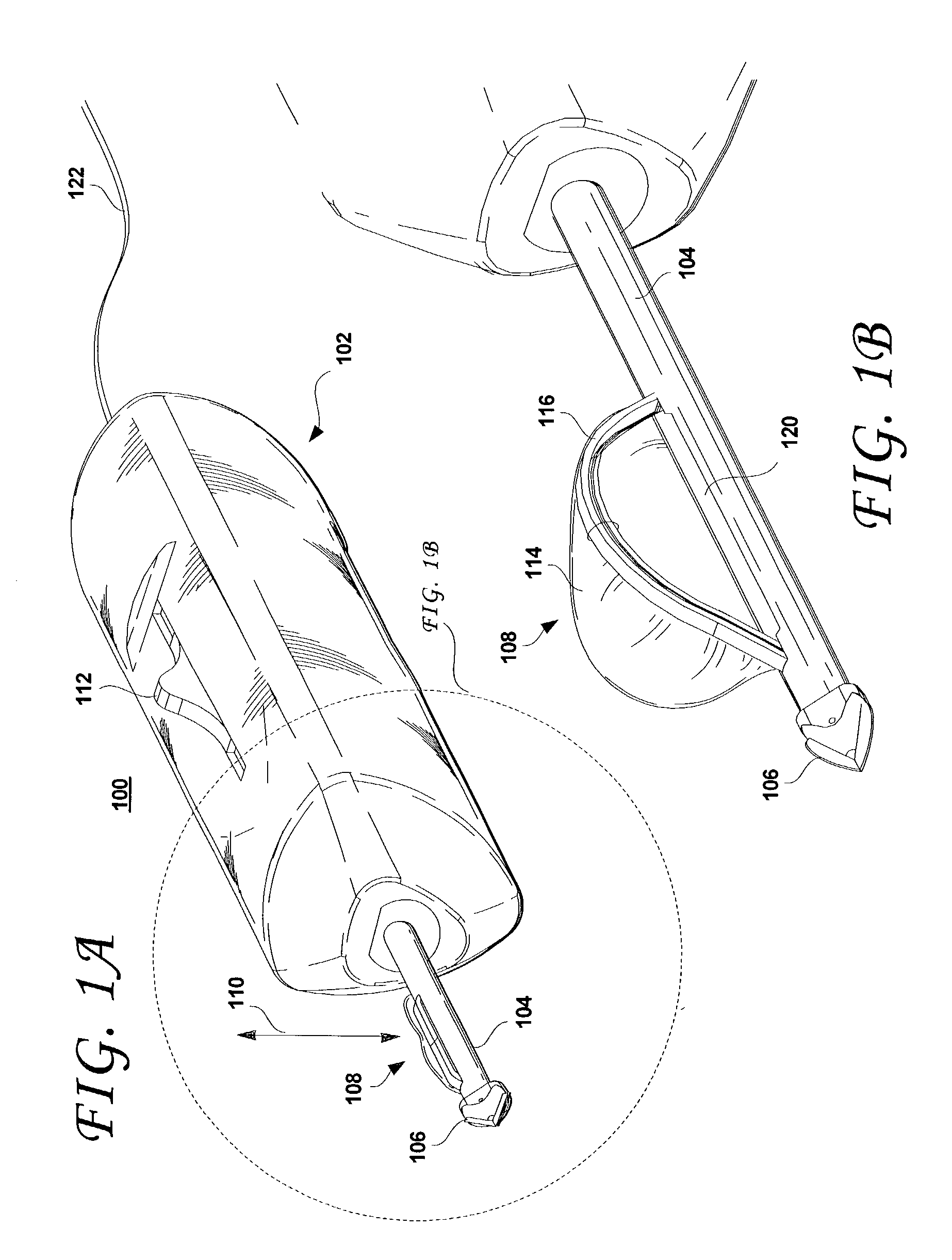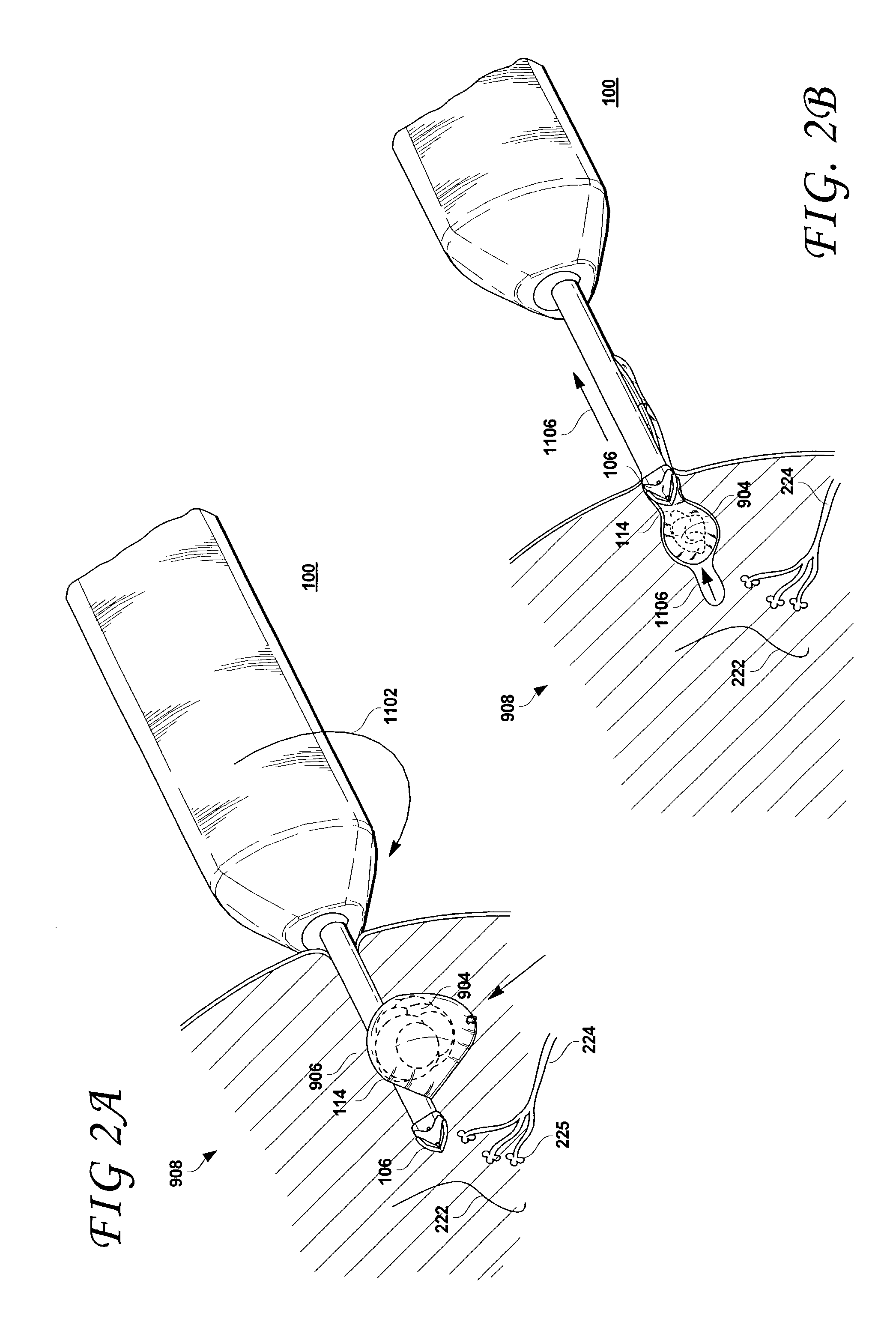Excisional devices having selective cutting and atraumatic configurations and methods of using same
a technology of selective cutting and surgical devices, applied in the field of distal tips, can solve the problems of time-consuming, multi-step process of mammography, and the threat of breast cancer, and achieve the effects of reducing the risk of breast cancer
- Summary
- Abstract
- Description
- Claims
- Application Information
AI Technical Summary
Benefits of technology
Problems solved by technology
Method used
Image
Examples
Embodiment Construction
[0063]FIG. 1A shows an excisional biopsy device having a conventional distal tip. The excisional biopsy device shown in FIGS. 1A through 2B is disclosed in commonly assigned and co-pending US patent application entitled “Methods And Devices For Cutting And Collecting Soft Tissue”, Ser. No. 10 / 189,277 filed on Jul. 3, 2002, the disclosure of which is incorporated herewith by reference in its entirety. As shown, the excisional device 100 includes a proximal section 102 that may be configured to fit the physician's hand (or that may alternatively be configured for a stereotactic apparatus). Extending from the proximal section 102 is a shaft 104 that is terminated by a distal tip 106. The distal tip 106 is configured so as to easily penetrate a mass of tissue. The distal tip 106 may be configured to be energized by a radio frequency (RF) energy source, supplied via the electrical cord 122. However, the distal tip 106 need not be energized, as the cutting surface(s) of the distal tip 106...
PUM
 Login to View More
Login to View More Abstract
Description
Claims
Application Information
 Login to View More
Login to View More - R&D
- Intellectual Property
- Life Sciences
- Materials
- Tech Scout
- Unparalleled Data Quality
- Higher Quality Content
- 60% Fewer Hallucinations
Browse by: Latest US Patents, China's latest patents, Technical Efficacy Thesaurus, Application Domain, Technology Topic, Popular Technical Reports.
© 2025 PatSnap. All rights reserved.Legal|Privacy policy|Modern Slavery Act Transparency Statement|Sitemap|About US| Contact US: help@patsnap.com



